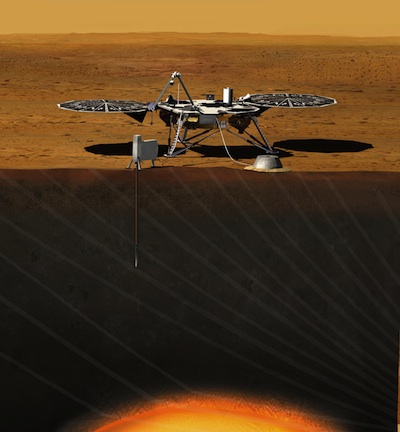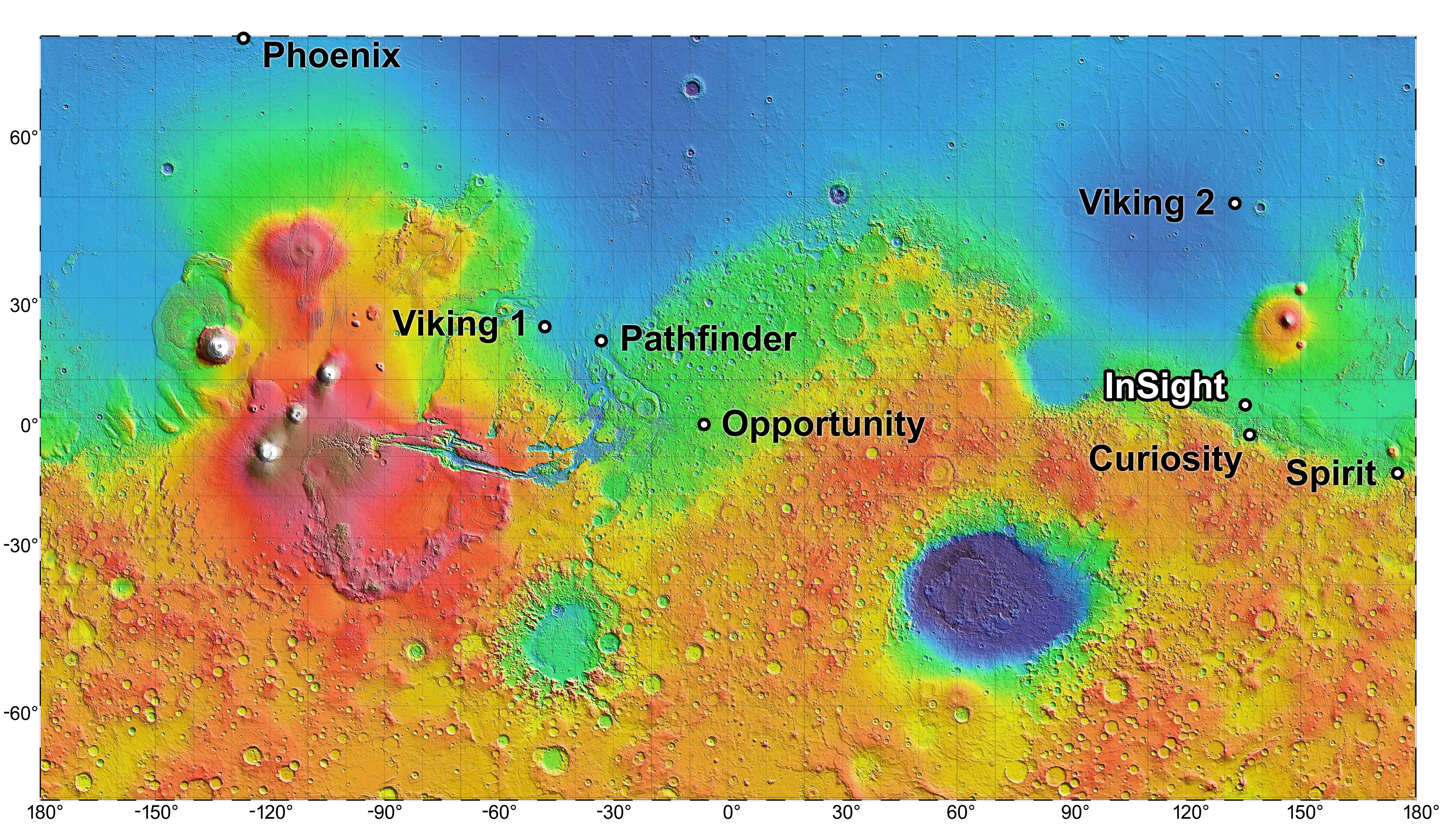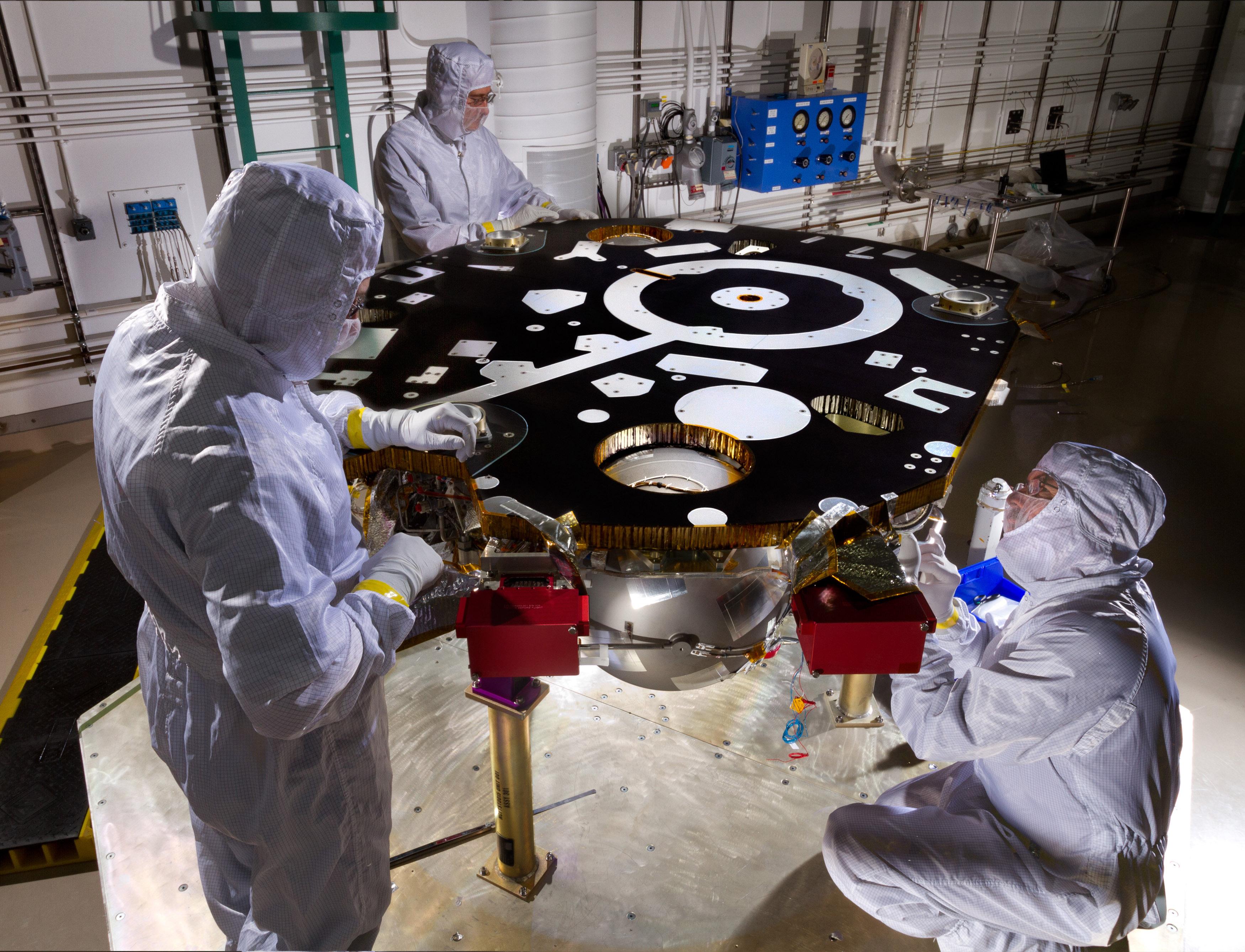- Joined
- Oct 11, 2009
- Messages
- 3,484
- Reaction score
- 403
- Points
- 123
- Location
- Utrecht
- Website
- www.spaceflightnewsapi.net
2 weeks after the landing of curiosity, NASA has selected the next mission to the red planet. InSight. InSight (Interior Exploration using Seismic Investigations, Geodesy and Heat Transport) is a NASA Discovery Program mission that will place a single geophysical lander on Mars to study its deep interior. But InSight is more than a Mars mission - it is a terrestrial planet explorer that will address one of the most fundamental issues of planetary and solar system science - understanding the processes that shaped the rocky planets of the inner solar system (including Earth) more than four billion years ago.
By using sophisticated geophysical instruments, InSight will delve deep beneath the surface of Mars, detecting the fingerprints of the processes of terrestrial planet formation, as well as measuring the planet's "vital signs": Its "pulse" (seismology), "temperature" (heat flow probe), and "reflexes" (precision tracking).
The InSight mission will seek to understand the evolutionary formation of rocky planets, including Earth, by investigating the interior structure and processes of Mars. InSight will also investigate the dynamics of Martian tectonic activity and meteorite impacts, which could offer clues about such phenomena on Earth.
The InSight mission is similar in design to the Mars lander that the Phoenix mission used successfully in 2007 to study ground ice near the north pole of Mars. The reuse of this technology, developed and built by Lockheed-Martin Space Systems in Denver, CO, will provide a low-risk path to Mars without the added cost of designing and testing a new system from scratch.
The InSight lander will be equipped with two science instruments that will conduct the first "check-up" of Mars in more than 4.5 billion years, measuring its "pulse", or internal activity; its temperature; and its "reflexes" (the way the planet wobbles when it is pulled by the Sun and its moons). Scientists will be able to interpret this data to understand the planet's history, its interior structure and activity, and the forces that shaped rocky planet formation in the inner solar system.
The science payload is comprised of two instruments: the Seismic Experiment for Interior Structure (SEIS), provided by the French Space Agency (CNES), with the participation of the Institut de Physique du Globe de Paris (IPGP), the Swiss Federal Institute of Technology (ETH), the Max Planck Institute for Solar System Research (MPS), Imperial College and the Jet Propulsion Laboratory (JPL); and the Heat Flow and Physical Properties Package (HP3), provided by the German Space Agency (DLR). In addition, the Rotation and Interior Structure Experiment (RISE), led by JPL, will use the spacecraft communication system to provide precise measurements of planetary rotation.
Key dates
Launch: March 8 - March 27, 2016
Landing: September 20, 2016
Surface operations: 720 days / 700 sols
First science return: October 2016
Instrument deployment: 60 sols (including 20 sols margin)
Data volume over 1 Martian year: More than 29 Gb (processed seismic data posted to the Web in 2 weeks; remaining science data less than 3 months, no proprietary period)
End of Mission: September 18, 2018

Factsheet download (PDF)
Bookmark download (PDF)
http://insight.jpl.nasa.gov/mission/
http://www.spaceflightnow.com/news/n1208/20insight/
By using sophisticated geophysical instruments, InSight will delve deep beneath the surface of Mars, detecting the fingerprints of the processes of terrestrial planet formation, as well as measuring the planet's "vital signs": Its "pulse" (seismology), "temperature" (heat flow probe), and "reflexes" (precision tracking).
The InSight mission will seek to understand the evolutionary formation of rocky planets, including Earth, by investigating the interior structure and processes of Mars. InSight will also investigate the dynamics of Martian tectonic activity and meteorite impacts, which could offer clues about such phenomena on Earth.
The InSight mission is similar in design to the Mars lander that the Phoenix mission used successfully in 2007 to study ground ice near the north pole of Mars. The reuse of this technology, developed and built by Lockheed-Martin Space Systems in Denver, CO, will provide a low-risk path to Mars without the added cost of designing and testing a new system from scratch.
The InSight lander will be equipped with two science instruments that will conduct the first "check-up" of Mars in more than 4.5 billion years, measuring its "pulse", or internal activity; its temperature; and its "reflexes" (the way the planet wobbles when it is pulled by the Sun and its moons). Scientists will be able to interpret this data to understand the planet's history, its interior structure and activity, and the forces that shaped rocky planet formation in the inner solar system.
The science payload is comprised of two instruments: the Seismic Experiment for Interior Structure (SEIS), provided by the French Space Agency (CNES), with the participation of the Institut de Physique du Globe de Paris (IPGP), the Swiss Federal Institute of Technology (ETH), the Max Planck Institute for Solar System Research (MPS), Imperial College and the Jet Propulsion Laboratory (JPL); and the Heat Flow and Physical Properties Package (HP3), provided by the German Space Agency (DLR). In addition, the Rotation and Interior Structure Experiment (RISE), led by JPL, will use the spacecraft communication system to provide precise measurements of planetary rotation.
Key dates
Launch: March 8 - March 27, 2016
Landing: September 20, 2016
Surface operations: 720 days / 700 sols
First science return: October 2016
Instrument deployment: 60 sols (including 20 sols margin)
Data volume over 1 Martian year: More than 29 Gb (processed seismic data posted to the Web in 2 weeks; remaining science data less than 3 months, no proprietary period)
End of Mission: September 18, 2018

Factsheet download (PDF)
Bookmark download (PDF)
http://insight.jpl.nasa.gov/mission/
http://www.spaceflightnow.com/news/n1208/20insight/



